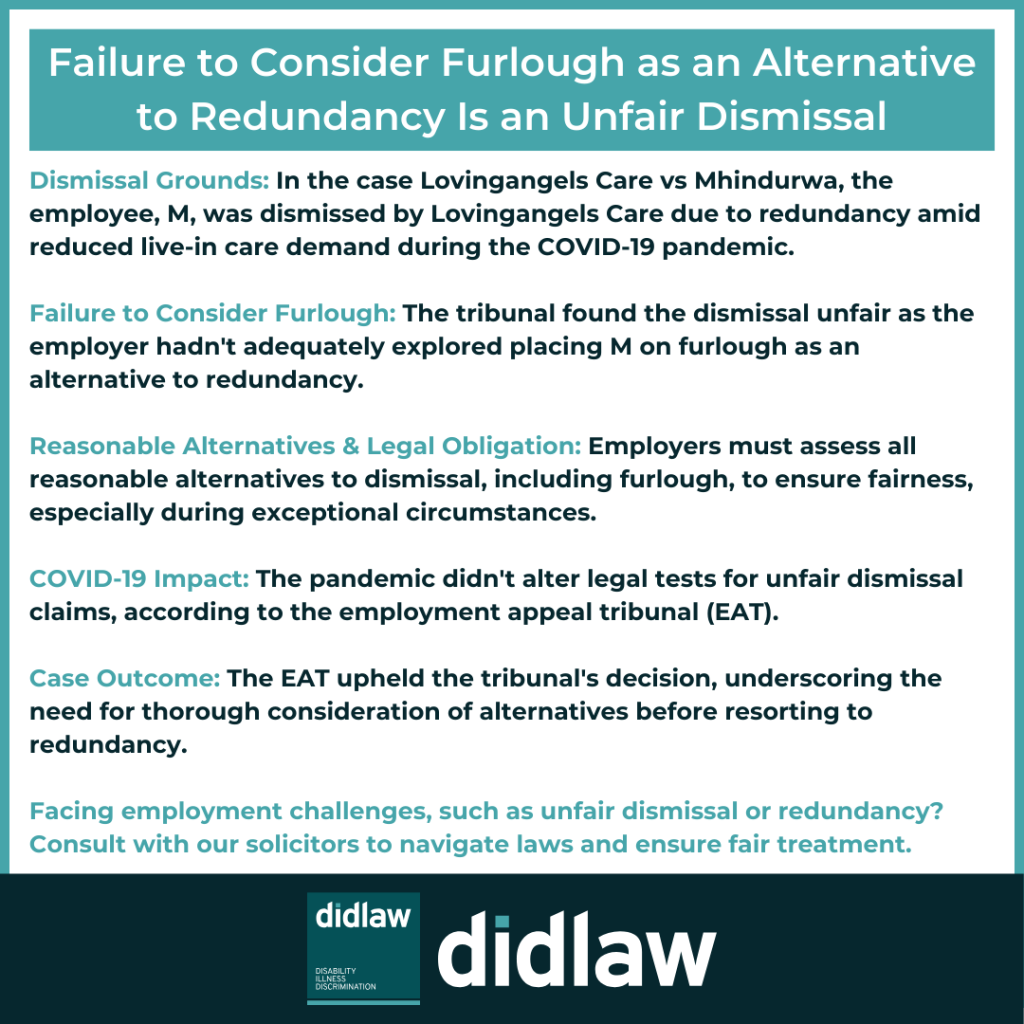
An employer unfairly dismissed an employee after it failed to properly consider furlough as an alternative to dismissal in a redundancy situation, the EAT has ruled.
Lovingangels Care Ltd v Mhindurwa concerned a Claimant, M, who worked as a live-in carer. In early 2020, the person for whom M was providing care went into hospital. Since the COVID-19 pandemic significantly reduced the amount of live-in care available, it was not possible to move M to care for another of the Respondent’s clients. The Respondent dismissed her by reason of redundancy.
A first instance tribunal upheld the Claimant’s claim that it was unfair to dismiss her for redundancy without considering putting her on furlough. The tribunal noted that the purpose of the Coronavirus Job Retention Scheme was to avoid laying off employees during the pandemic. It considered a reasonable employer would have considered furlough as an alternative to dismissal, and that the Respondent had failed to do so.
Upholding the tribunal’s decision, the Employment Appeal Tribunual (EAT) noted that the COVID-19 pandemic had not altered the legal tests to be considered in a claim for unfair dismissal. There was no need for tribunals to take any special approach in considering dismissals occurring during the pandemic. Moreover, the tribunal had been entitled to conclude that the possibility of furlough ought to have been properly considered, alongside any other reasonable alternatives to dismissal. There was nothing unrealistic about this, given the need for live-in carers did not cease during the pandemic.
Mhindurwa does not change the law. Employers are obliged to consider alternatives to dismissal in redundancy situations in order to establish that the dismissal was fair. What is a reasonable alternative will depend on the circumstances: it is not the case that the possibility of furlough would invalidate all redundancies made during the pandemic. The issue will be fact-specific. Many employers experienced a lasting downturn in business because of the pandemic and retaining an employee even if their salary were largely covered by the furlough scheme would have involved other costs. This case is however an important reminder of the need to carefully consider all reasonable alternatives when a potential redundancy situation arises, even in exceptional circumstances.
This blog was written by Kendal Youngblood, Solicitor at didlaw.
